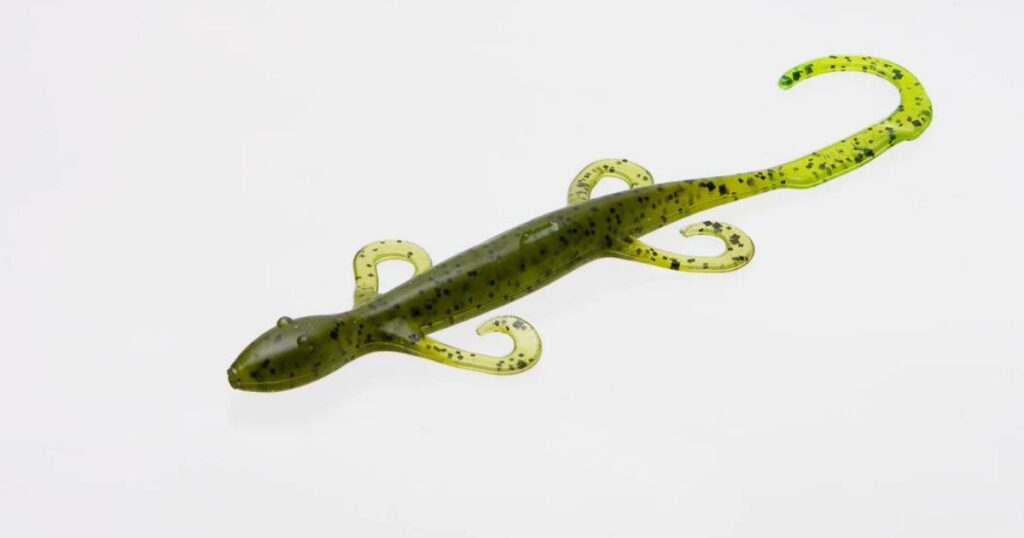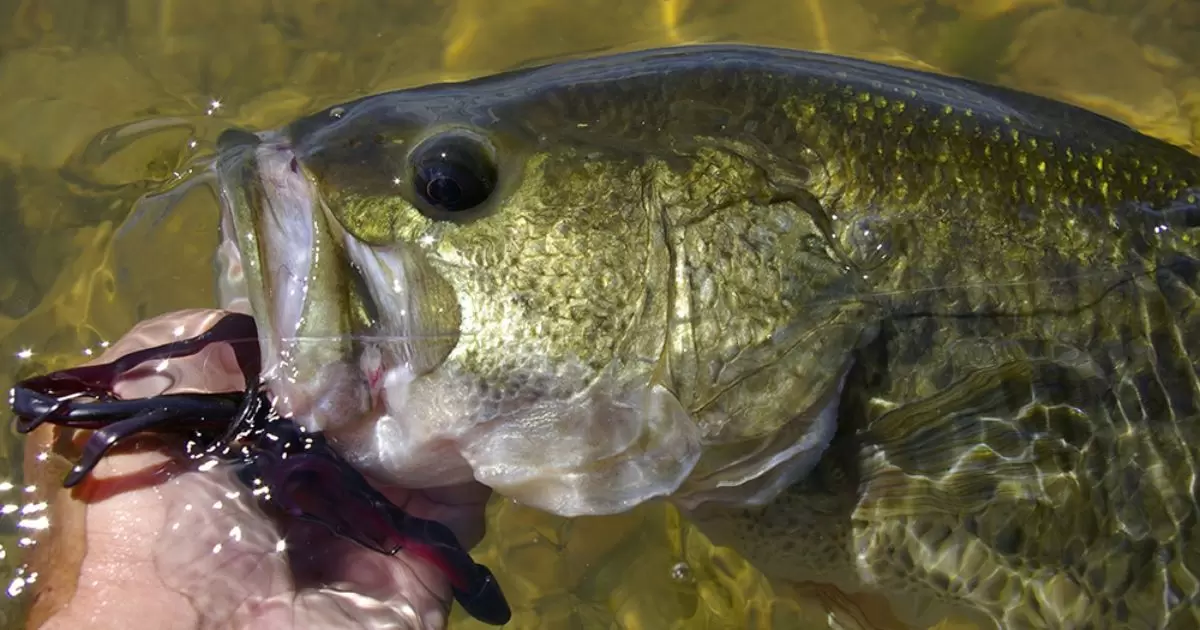Bass fishing is a popular and exciting sport enjoyed by anglers of all levels. When it comes to targeting bass, there’s an array of lures and techniques available but one method that consistently produces results is rigging soft plastic lizards. Soft plastic lizards imitate the appearance and movement of natural prey, making them highly appealing to hungry bass. In this comprehensive guide, we’ll explore the world of bass fishing and delve into various rigging methods for soft plastic lizards. Whether you’re a beginner looking to get started or an experienced angler aiming to enhance your skills this article will provide valuable insights and tips to help you catch more bass.
Why Use Soft Plastic Lizards for Bass Fishing?
Before we dive into the specifics of rigging soft plastic lizards, it’s crucial to understand why these lures are so effective for bass fishing
Realism Soft plastic lizards closely resemble the appearance and movement of actual lizards which are natural prey for many bass species. Their lifelike design and action make them highly attractive to hungry bass.
Versatility These lures are incredibly versatile and can be used in various fishing conditions, including shallow and deep waters, as well as different seasons. They can be rigged in multiple ways to suit your fishing needs.
Durability Soft plastic lizards are tough and can withstand multiple bites and strikes from aggressive bass. This durability makes them a cost-effective choice for anglers.
Year round Appeal Bass feed on lizards throughout the year so soft plastic lizards can be productive in all seasons making them a reliable choice for bass fishing.
Rigging methods for soft plastic lizards
Rigging soft plastic lizards for bass fishing involves versatile methods. Texas rigging offers weedless presentation, perfect for cover. Carolina rigging provides enticing action and covers a wide area. Wacky rigging, with a hook through the middle, imparts lifelike movement, enticing strikes. Experiment with these techniques to find the most effective approach for your bass fishing adventure.
Different Rigging Methods
| Rigging Method | Purpose/Use | Materials Needed | Steps |
| Texas Rig | Fishing in heavy cover | Soft plastic lizard, Bullet weight, Offset worm hook, Pegging device | 1. Insert hook into lizard’s head. 2. Push hook through body. 3. Add bullet weight and pegging device. 4. Attach hook to line. 5. Secure weight with pegging device. 6. Texas rig lizard by burying hook point. |
| Carolina Rig | Covering a wide area | Soft plastic lizard, Bullet weight, Barrel swivel, Leader line, Offset worm hook | 1. Slide bullet weight and swivel onto line. 2. Attach leader line with hook. 3. Rig lizard on the hook. 4. Cast and retrieve. |
| Wacky Rig | Finesse and clear water | Soft plastic lizard, Wacky rig tool or o-rings, Wacky rig hook | 1. Insert o-ring or create hole. 2. Hook lizard through o-ring/hole. 3. Cast and retrieve with subtle twitches. |
| Weightless Rig | Slow, natural fall | Soft plastic lizard, Offset worm hook | 1. Hook lizard through the head. 2. Cast and allow for natural fall. 3. Retrieve with a slow, twitchy motion. |
| Drop Shot Rig | Targeting suspended bass | Soft plastic lizard, Drop shot weight, Drop shot hook, Leader line | 1. Tie hook to leader line. 2. Attach weight to leader. 3. Rig lizard on hook. 4. Cast and use an up-and-down motion. |
This table provides a quick reference guide to help anglers choose the right rigging method for their specific bass fishing situation.
Choosing the Right Soft Plastic Lizard

When it comes to choosing soft plastic lizards for bass fishing, there are several factors to consider.
Size: Soft plastic lizards come in various sizes typically ranging from 4 to 8 inches. The size you choose should match the forage available in your fishing area and the bass’s feeding preferences.
Color: Selecting the right color is essential. Natural colors like green pumpkin, watermelon, or brown can work well in most situations. However don’t be afraid to experiment with different colors to match the local prey or water conditions.
Action: Some soft plastic lizards have enhanced tail action or appendages to mimic the movement of real lizards. Consider the action you want to achieve and select lures accordingly.
Scent: Some soft plastic lizards are infused with scents or attractants to entice bass. These can be especially useful in murky water or when bass are not very active.
Buoyancy: The buoyancy of the lure can affect its fall rate. Some lizards are designed to fall slowly while others sink more quickly. Choose a buoyancy that suits your fishing style and the bass’s behavior.
Fishing Tips and Techniques

Now that you’ve learned how to rig a soft plastic lizard, here are some tips and techniques to help you succeed in catching more bass.
Match the Hatch: Pay attention to the local prey in the area you’re fishing. If lizards are a significant part of the bass’s diet a soft plastic lizard in the right size and color can be deadly.
Vary Your Retrieve: Experiment with different retrieve styles such as a slow crawl a fast twitch or a stop-and-go retrieve. Bass may prefer different presentations on any given day.
Pay Attention to Water Temperature: Bass behavior varies with water temperature. In colder water use a slower retrieve while in warmer water you can increase your retrieval speed.
Fish Around Cover: Soft plastic lizards are excellent for targeting bass hiding in cover. Cast near submerged vegetation fallen trees or rocky outcrops to entice strikes.
Use Fluorocarbon Line:Fluorocarbon line is less visible underwater and has excellent sensitivity making it a good choice for bass fishing with soft plastic lizards.
Practice Catch and Release: Bass are a valuable resource and practicing catch and release helps preserve their populations and the sport for future generations.
FAQs
How do I choose the right size soft plastic lizard?
The size of your soft plastic lizard should match the local forage and bass preferences. A 4 to 8-inch lizard is a versatile range to start with.
What’s the best rigging method for bass in heavy cover?
The Texas rig is ideal for heavy cover as it’s weedless and allows you to retrieve your lure without snagging.
How can I make my soft plastic lizard move naturally in the water?
To create a lifelike action use a slow twitchy retrieve with pauses. The lizard’s natural fall and movement will entice bass.
Are scented soft plastic lizards more effective?
Scented lizards can be effective especially in murky water or when bass are less active. However, it’s not always necessary.
What’s the best time to use a wacky rig for soft plastic lizards?
The wacky rig is great for finesse fishing in clear water or when bass are being selective. Use it when bass are less aggressive.
Conclusion
Rigging a soft plastic lizard for bass fishing is an art and a science. With the right technique and presentation, these lifelike lures can consistently attract and hook bass in various conditions. Whether you prefer the Texas rig, Carolina rig, wacky rig, weightless rig, or drop shot rig, the key is to adapt your approach to the specific fishing situation.
Remember to choose the right size, color and action for your soft plastic lizards and don’t be afraid to experiment to find what works best. With practice and patience, you can become a successful bass angler who consistently catches more of these exciting and challenging fish. So, head to your favorite bass fishing spot rig up a soft plastic lizard and get ready for an exhilarating day on the water.

